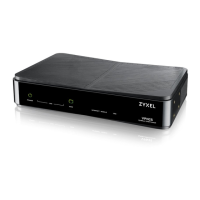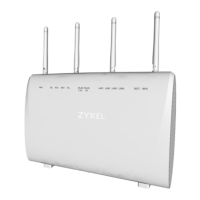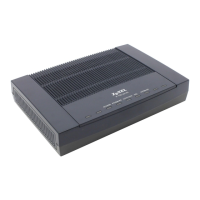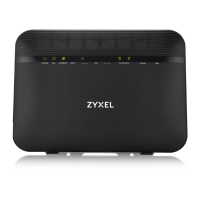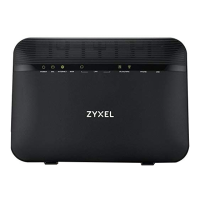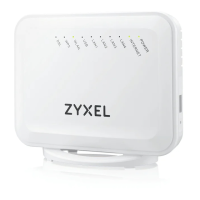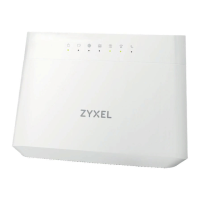Chapter 17 Link Aggregation
VES1724-56 User’s Guide
181
Configure trunk groups or LACP before you connect the Ethernet switch to avoid causing network
topology loops.
17.2.1 Link Aggregation ID
LACP aggregation ID consists of the following information
2
:
17.3 Link Aggregation Status
Click Advanced Application > Link Aggregation in the navigation panel. The Link Aggregation
Status screen displays by default. See Section 17.1 on page 180 for more information.
Figure 107 Advanced Application > Link Aggregation Status
The following table describes the labels in this screen.
Table 72 Link Aggregation ID: Local Switch
SYSTEM PRIORITY MAC ADDRESS KEY PORT PRIORITY PORT NUMBER
0000 00-00-00-00-00-00 0000 00 0000
Table 73 Link Aggregation ID: Peer Switch
SYSTEM PRIORITY MAC ADDRESS KEY PORT PRIORITY PORT NUMBER
0000 00-00-00-00-00-00 0000 00 0000
2. Port Priority and Port Number are 0 as it is the aggregator ID for the trunk group, not the individual port.
Table 74 Advanced Application > Link Aggregation Status
LABEL DESCRIPTION
Index This field displays the trunk ID to identify a trunk group, that is, one logical link containing
multiple ports.
Enabled Port These are the ports you have configured in the Link Aggregation screen to be in the trunk
group.
Synchronized
Ports
These are the ports that are currently transmitting data as one logical link in this trunk
group.
Aggregator ID Link Aggregator ID consists of the following: system priority, MAC address, key, port priority
and port number. Refer to Section 17.2.1 on page 181 for more information on this field.
Status This field displays how these ports were added to the trunk group. It displays:
• Static - if the ports are configured as static members of a trunk group.
• LACP - if the ports are configured to join a trunk group via LACP.
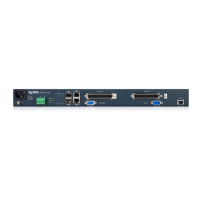
